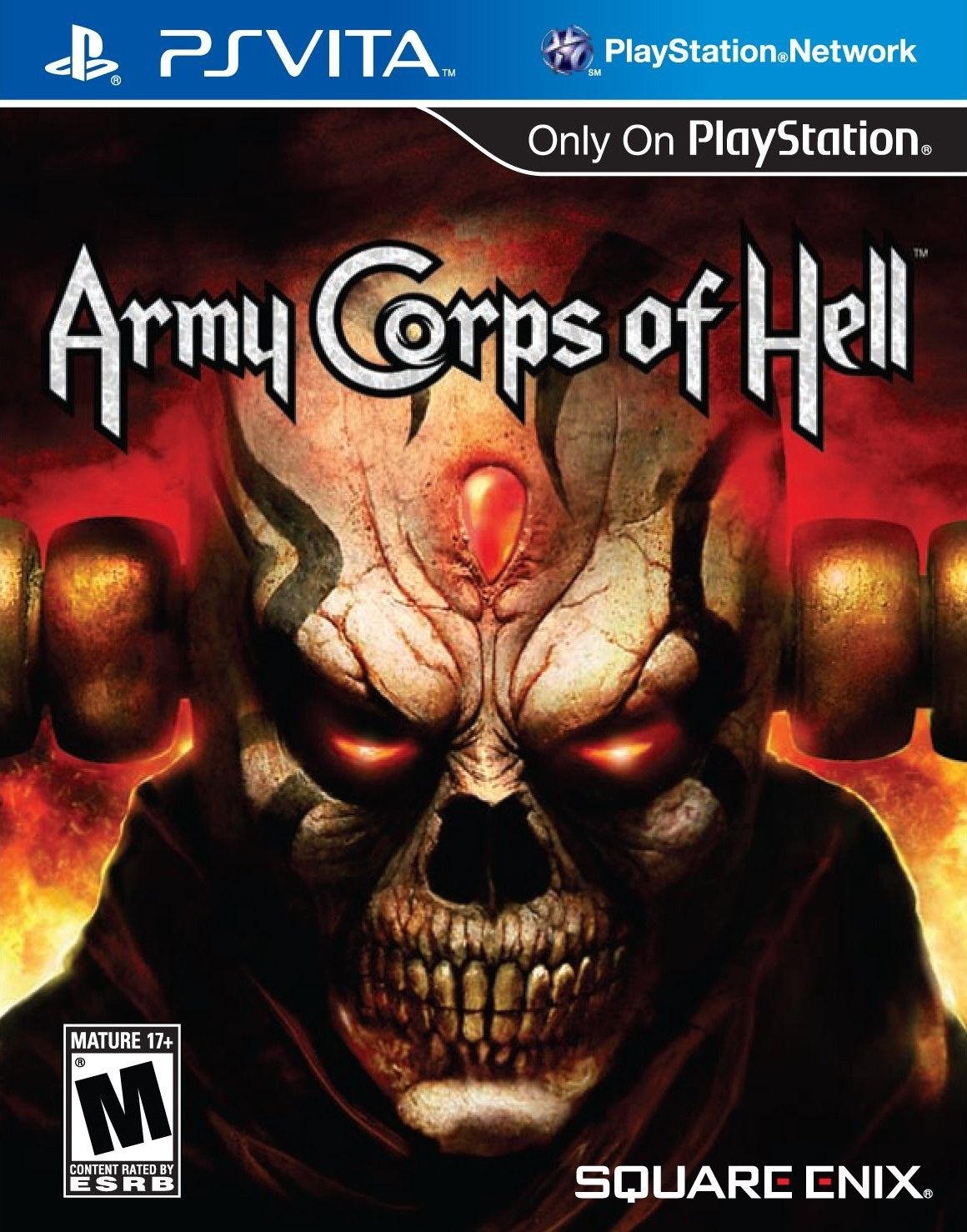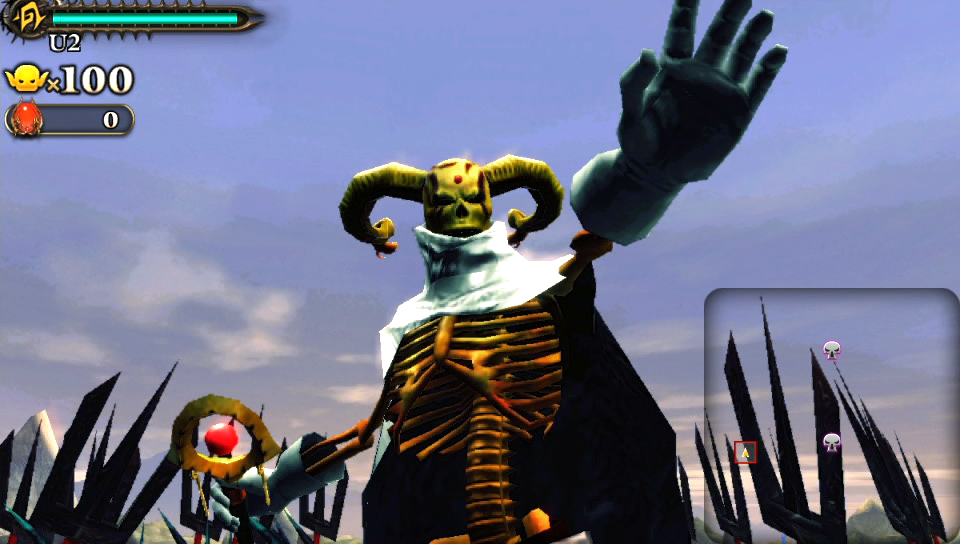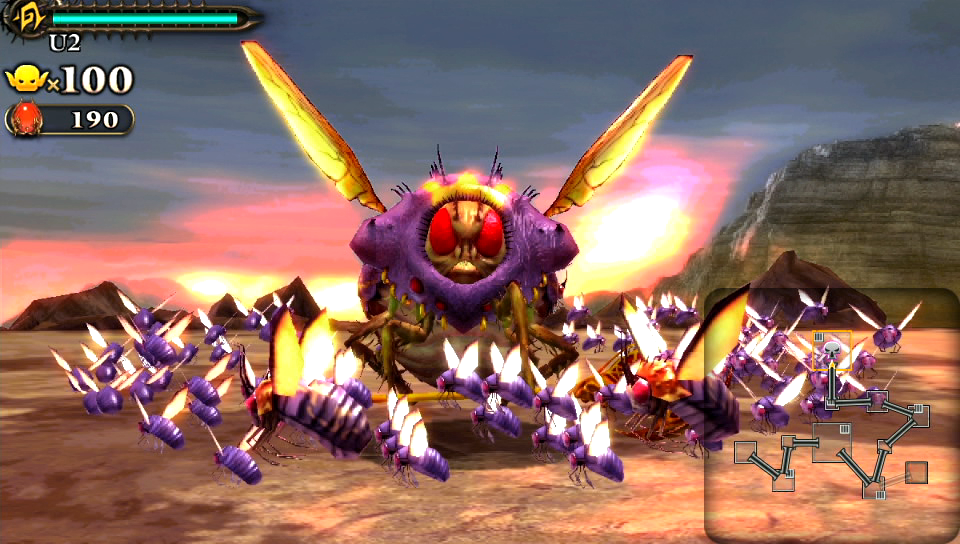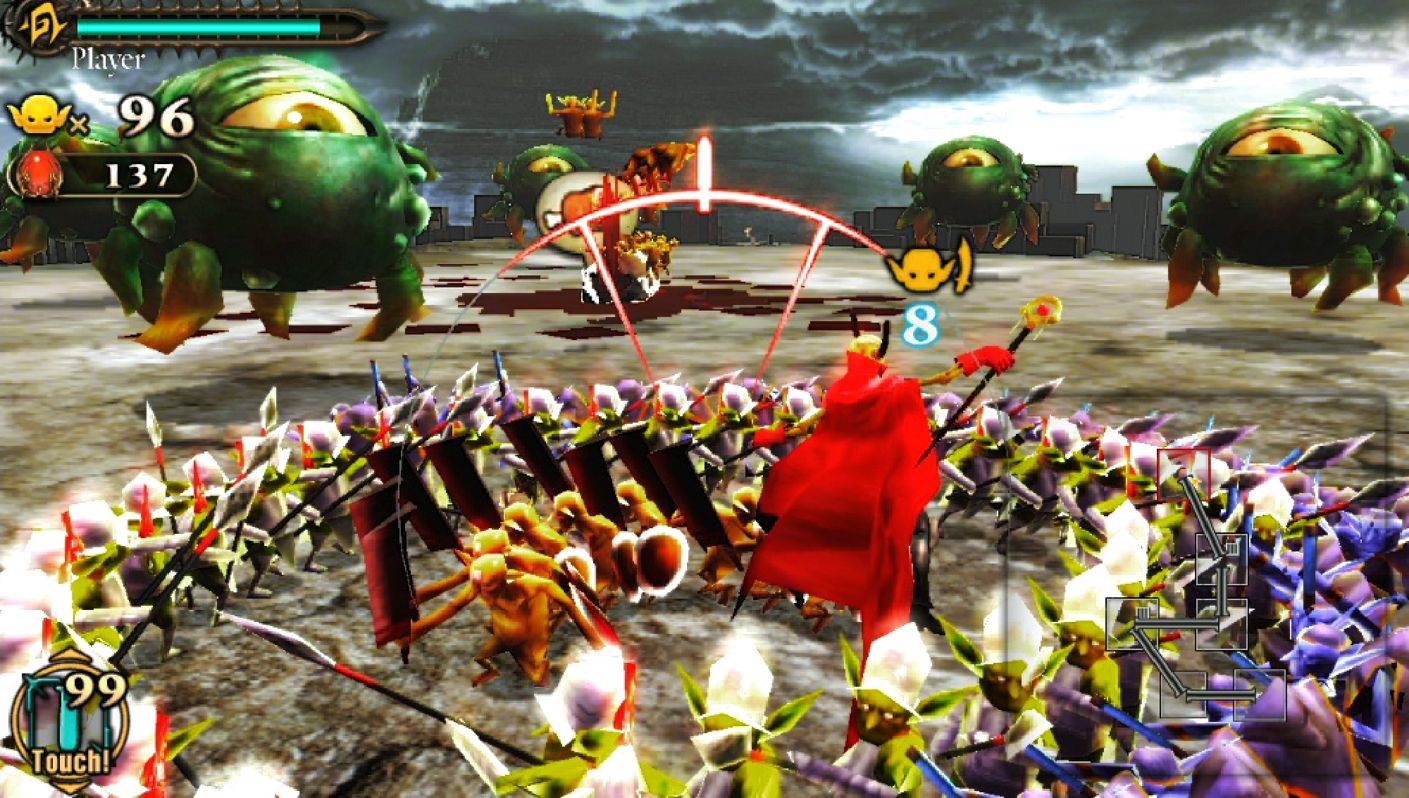A skeleton falls out of the sky and demands fealty from the goblins he lands among. A pulsing, frenetic Japanese metal soundtrack accompanies his commands, insane guitar riffs screaming as he claims his dominion over the land and its people. Imbuing them with his power, the skeleton -- the King of Hell -- sets out with his newly acquired demon hordes to reclaim his flesh and kingdom from... something. I'm actually not entirely sure he is the King of Hell to begin with, but in the end he certainly is.
What begins as ingenious novelty and fresh, enjoyable gameplay is eventually overshadowed by intense repetition of both visuals, sound, and battle mechanics. And with no end in site to schlepping through the same tasks players have already done for the first twenty levels, the whole thing goes to hell in a very nicely woven handbasket.
Described as a heavy-metal variation on the popular Pikmin games, the action of Army Corps of Hell centers around sending goblins into group attacks on huge monsters. Defeating these monsters allows players to progress to the next featureless area, where they must once again battle beasts in order to move on. Battle mechanics require players to double-wield their dodging and attack skills, as the King of Hell must direct his goblins on when to dodge and how to form for their next attack. Each movement takes precision and lightning-quick thinking, with failure to adapt resulting in long drawn-out fights ending in total slaughter of your horde.
The game makes surprisingly intuitive use of the Vita's controls. Th front pads allow you to switch out your armors, Left and Right buttons are for attacking and calling your goblins into formation, and the sticks move you forward and rotate the camera angle. The back touch pads are used for special power-ups. Tapping the touch pads to a specific rhythm under a time limit will reward players with more HP upon revival after a KO, a power-up for your goblins, and grant the use of special in-battle items.
Minor battles are a piece of cake, with a well-timed Salvo Attack (group effort) knocking out most baddies. But it's the bosses that are the true challenge. Often large grotesques numerous times bigger than your King and tiny goblins, boss fights require every drop of knowledge and skill you have acquired in your playthrough so far. Simply holding down the R button for a repeated attack won't cut the mustard. You've got to think fast or you'll be dead before you can blink. Nothing is more annoying that watching your goblins get sideswiped in all directions, forcing you to waste time running around reviving them.
Upon defeating a foe in battle, your goblins will devour its remains. The salvageable bits can be used later on for the game's crafting system, adding new weapons, armor, and specialized items to your arsenal. This, however, is pretty much the name of the game: defeat monster, eat monster, progress to next area, defeat monster, eat monster...
This is where Army Corps of Hell falls flat. The crafting system is great, and each boss battle requires a significantly different strategy if you're going to make it out alive. But other than this, there isn't much else. Battle areas are as bland as a vanilla wafer. A vanilla wafer in Hell. Common beasties are all the same but with different pallets, and the game keeps cycling through the same handful of them. The game follows a formula to a massive fault, creating an experience that is entertaining for the first four hours and monotonously exhausting for the rest.
Each level is quite literally copied and pasted from the last. But what is perhaps the most egregious of the game's sins is that it recycles the same cutscene. Over and over. At the end of each level players can view a cutscene. A cutscene. The cutscene. The only thing that changes between levels is the text at the bottom. There is no traditional voice-acting, just some deep grumblings from the King and some aesthetically-incongruous squealing from the goblins as they hold the head/body part/whatever of the boss they have just killed.
The icing on the cake is that the story is so poorly explained -- what little there is of it -- that I just couldn't get invested in the King of Hell's plight. Is he really the King of Hell? Or is he just some dude with an awesome helmet that turned into an animated skeleton and decided he would be the King of Hell? If he is the King, how did he lose his kingdom?
Despite all of this, Army Corps of Hell boasts some wonderfully dark artwork. Gritty, tattered landscapes, seas of stone, flecked with wind-polish bones. A sunken, rotting sky in the dark shades of dried blood and thunderclouds before a storm. Grotesque monsters with flame-colored hired boasting rippling muscles. A floating skeleton-man with a cape and enormous horned helmet leading a clustered army of the ugliest and yet cutest-sounding squealing goblins.
The soundtrack itself is a real piece of work, the element that truly sets the tone. From crazy 80s-anime-reminiscent Japanese metal to some truly gut-rolling scream-o and guitar riffs, the background music doesn't skimp on the heavy metal aesthetics. While there are only about two dozen songs that are also recycled over and over, these two-dozen songs give the game a little extra "umph" in terms of heart and overall presentation. Granted after twenty minutes Japanese heavy metal can make you a little twitchy, but at least you'll be alert.
Army Corps of Hell is quirky and truly excellently designed. It does not suffer from the identity crisis some games are guilty of and remains very much self-aware, true to its premise to the core. But for an action-strategy game with emphasis on the "action-strategy," the King of Hell has surely earned that title -- the first dozen levels play beautifully, but unless you're into repetitive gameplay with minuscule variation, there's not much a reason to keep playing.




